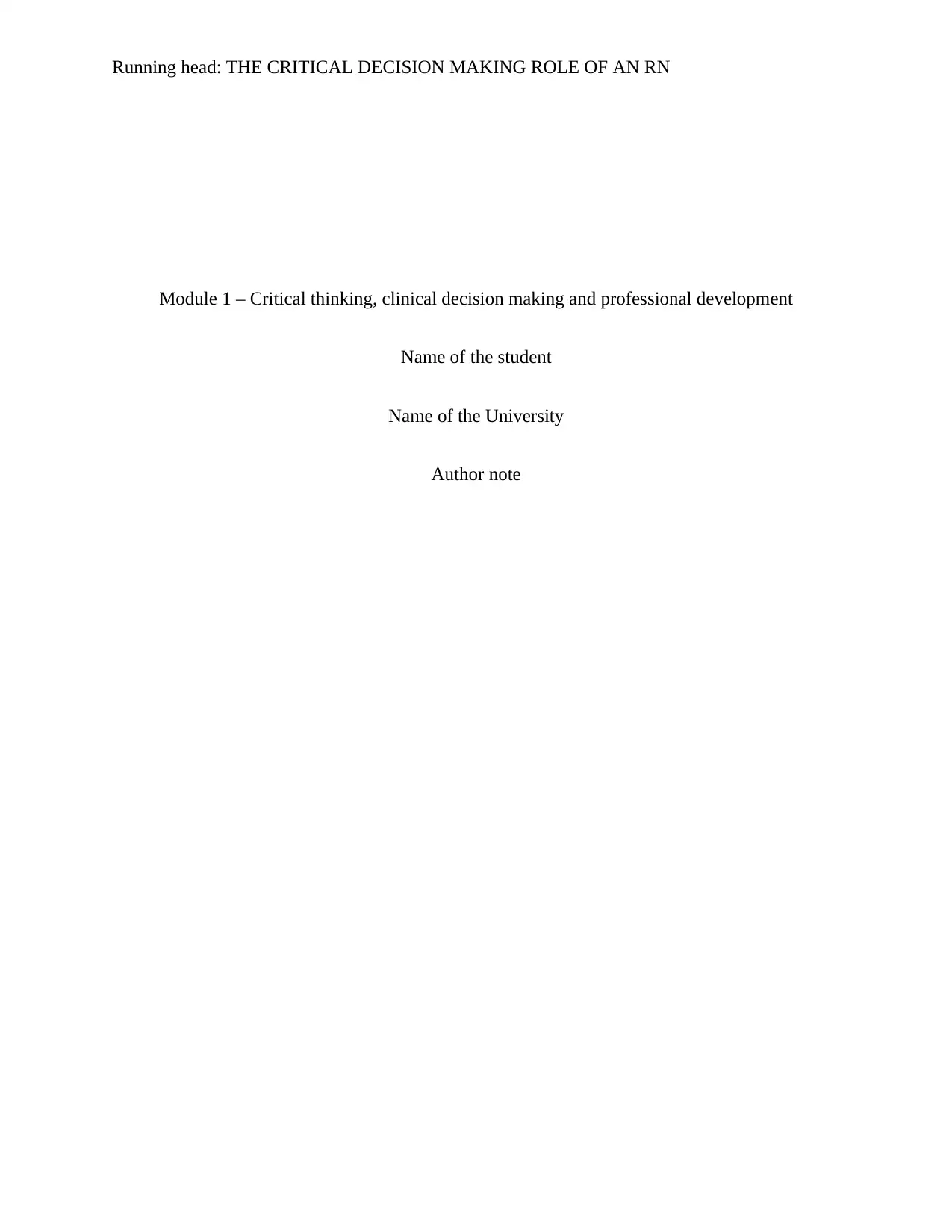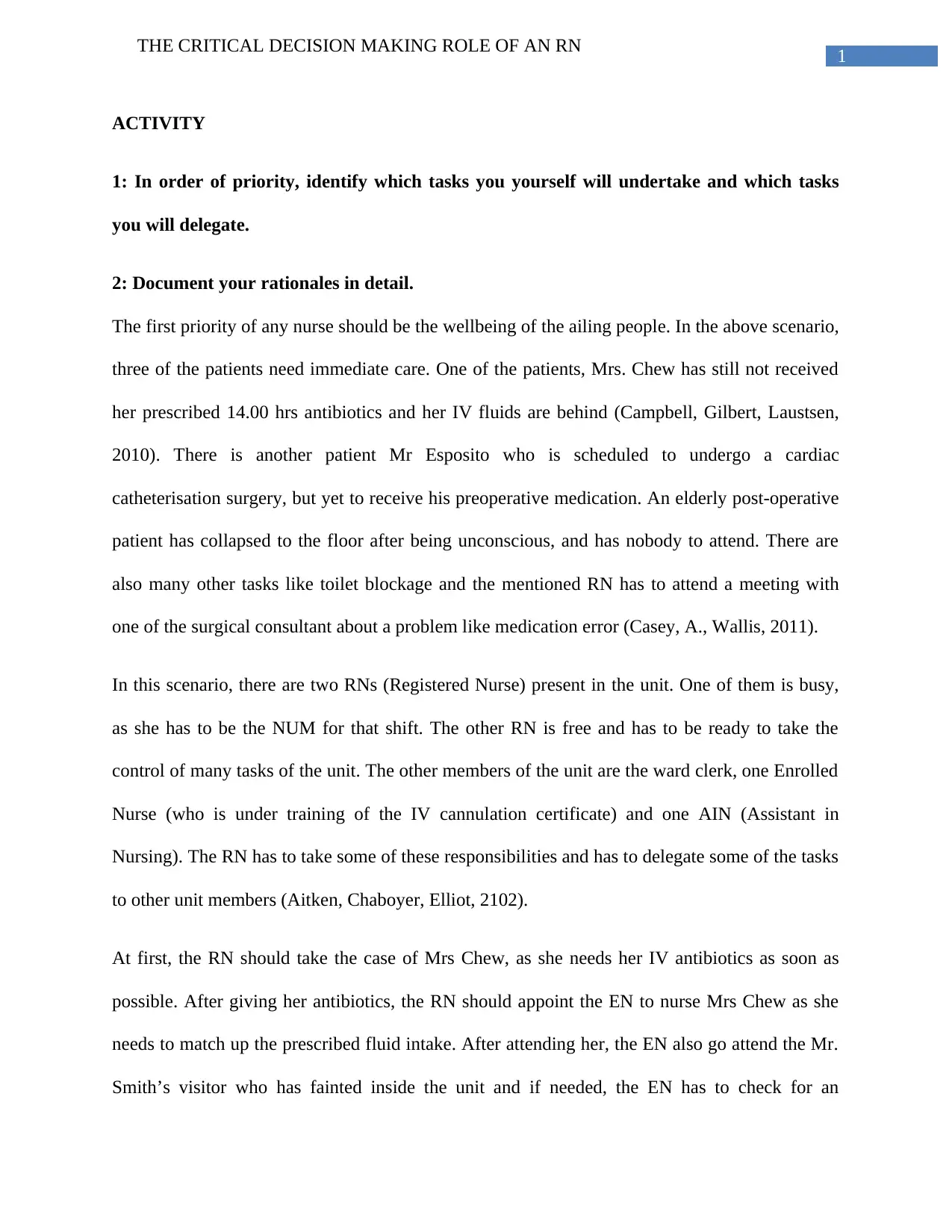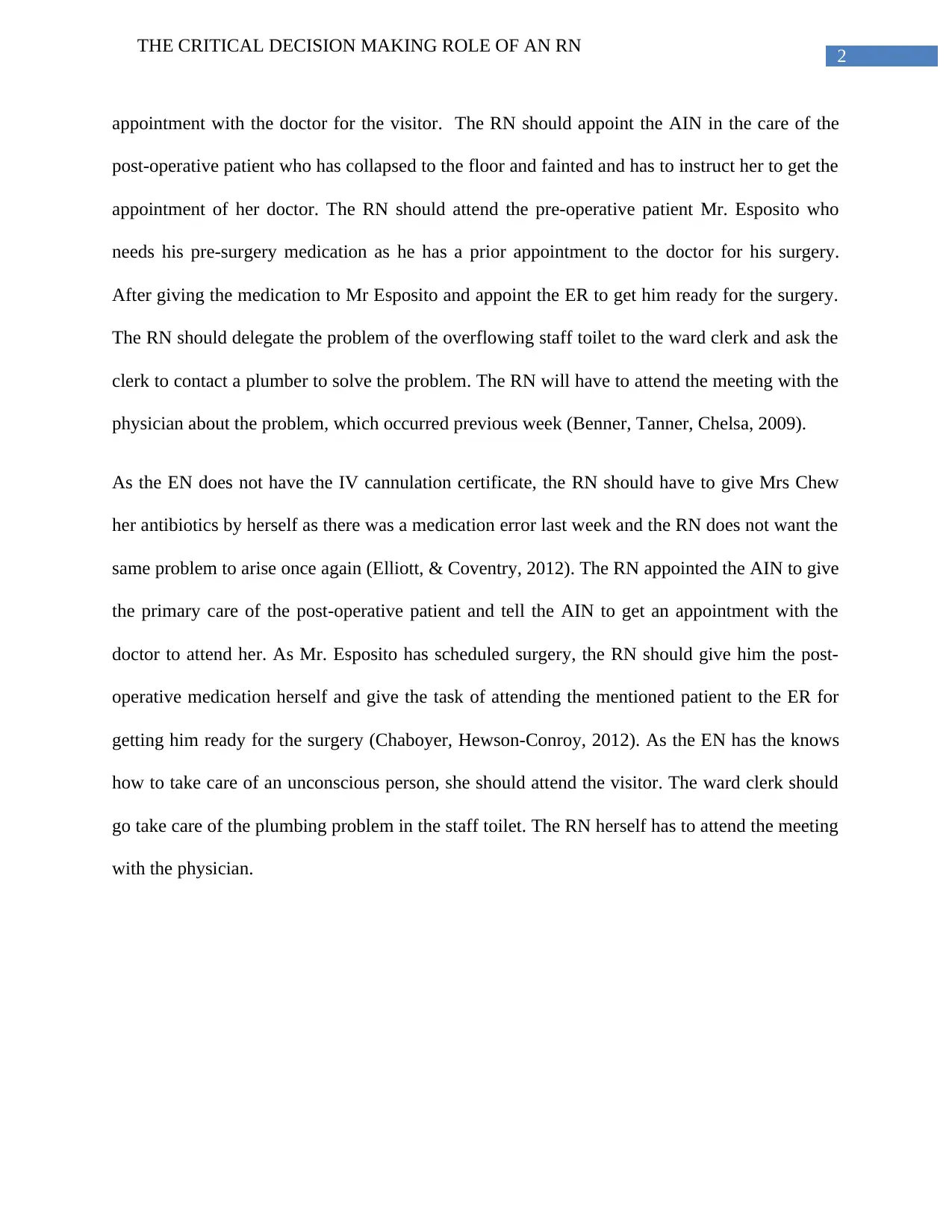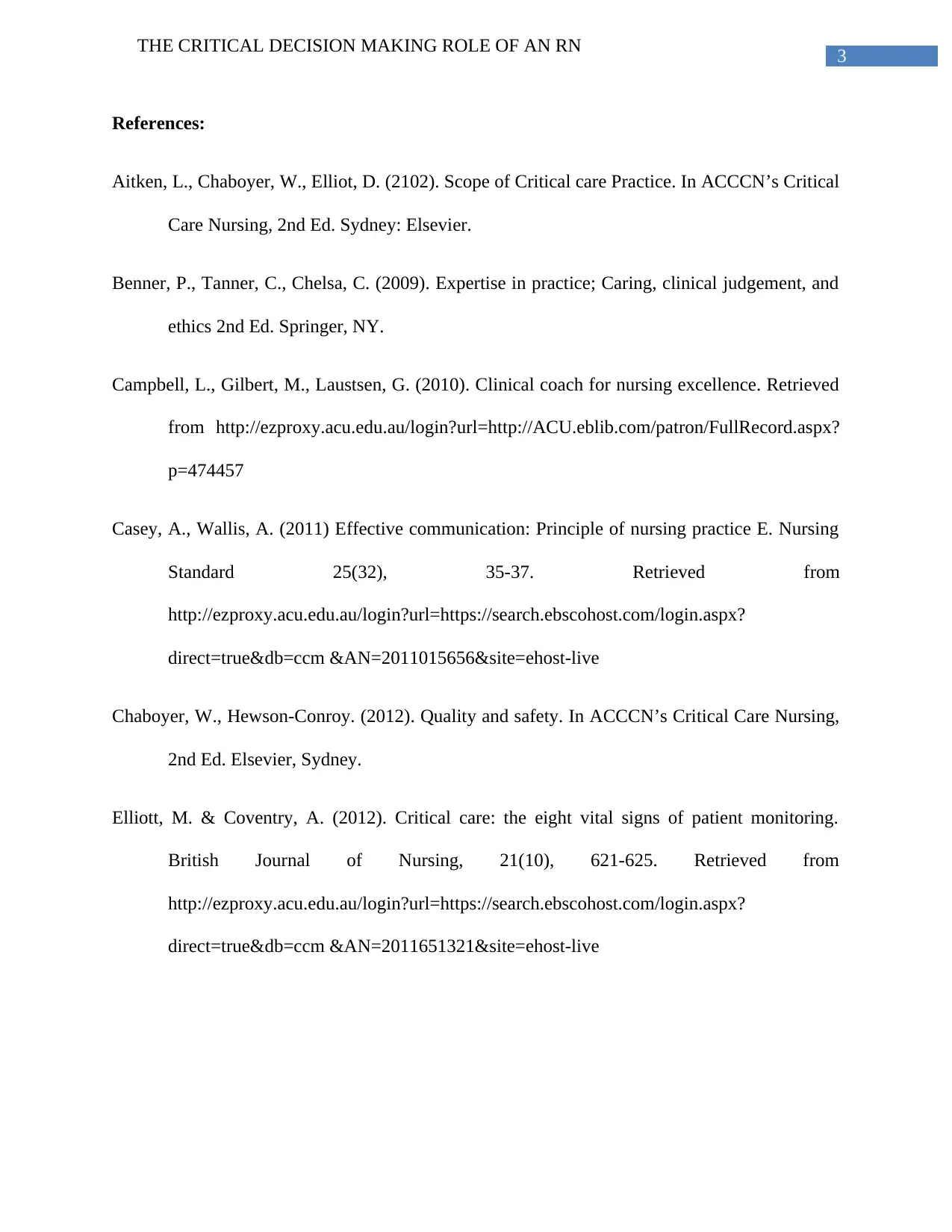Module 1: The Critical Decision Making Role of an RN - University
VerifiedAdded on 2019/10/31
|4
|965
|79
Homework Assignment
AI Summary
This assignment addresses the critical decision-making role of a Registered Nurse (RN) in a hospital setting, specifically within a module on critical thinking, clinical decision-making, and professional development. The student analyzes a scenario involving multiple patients with urgent needs, including a patient requiring antibiotics, another needing pre-operative medication, and a post-operative patient who has collapsed. The assignment requires the student to prioritize tasks and delegate responsibilities to other members of the nursing unit, such as the Enrolled Nurse (EN), Assistant in Nursing (AIN), and ward clerk, considering their skill sets and limitations. The rationale for each decision is documented, emphasizing the importance of patient well-being and safety. The RN in this scenario needs to balance immediate patient needs with other unit responsibilities such as addressing a medication error and a staff toilet blockage. The solution demonstrates the application of nursing principles, including effective communication and the importance of following protocols, while referencing relevant literature on critical care nursing and clinical judgment.
1 out of 4










![[object Object]](/_next/static/media/star-bottom.7253800d.svg)